AI-Driven Content Creation for 2025
AI-driven content creation in 2025 allows businesses to optimize their content strategies with advanced tools. By integrating AI, companies can streamline production, maintain consistent brand voice, and achieve better engagement through personalized, data-backed content.
The latest market research reveals that AI content creation tools support 75% of enterprise content operations, with a 34% annual growth in implementation. Organizations now seek practical methods to integrate AI tools while preserving content quality and authenticity.
This guide presents actionable strategies for AI content creation, supported by research findings and industry applications. You’ll learn how businesses achieve measurable results through precise AI implementation while maintaining their distinct brand voice.
Understanding the Current AI Content Landscape
The global AI-powered content creation market is projected to reach $7.9 billion by 2033, growing at a CAGR of 7.7%. This substantial growth reflects fundamental changes in how organizations approach content development. Recent analysis from Stanford’s AI Index indicates that companies using AI-assisted content creation report 40% improved productivity while maintaining quality standards.
The Evolution of AI Content Tools
According to research from the World Bank, modern AI content platforms have evolved significantly beyond basic text generation. Current platforms offer:

- Enterprise-grade content optimization with 85% accuracy rates
- Multilingual capabilities supporting 95+ languages
- Advanced tone and style customization with 90% brand alignment
- Real-time market trend integration updating every 15 minutes
Strategic Implementation Guidelines
Recent studies from OECD show that success with AI content creation requires a structured approach focusing on quality and strategic integration. Organizations implementing structured AI content strategies see a 45% increase in content engagement.
Content Quality Framework
Based on analysis from the US Patent Office, organizations achieving optimal results follow these key principles:

- Human-AI Collaboration Protocol
- Define clear roles for human editors and AI tools
- Establish quality benchmarks for AI-generated content
- Implement systematic review processes
- Monitor collaboration efficiency (average 32% time savings)
- Brand Voice Preservation
- Document brand voice guidelines for AI tools
- Create custom training datasets
- Regular calibration of AI outputs
- Maintain 95% brand voice consistency
- Content Performance Monitoring
- Track engagement metrics
- Measure conversion rates
- Analyze user feedback
- Implement real-time performance tracking
Practical Applications and Case Studies
The digital transformation at TV 2 Fyn achieved a 59% increase in click-through rates after implementing AI-driven headline optimization. Their success stemmed from:

- Strategic integration of AI tools with existing workflows
- Careful preservation of editorial standards
- Continuous performance monitoring and adjustment
- Implementation of automated quality control systems
According to research by Emerald Publishing, organizations implementing AI content tools effectively see:

- 42% reduction in content production time
- 35% increase in content engagement rates
- 28% improvement in SEO performance
- 53% better content consistency across channels
Technical Implementation Best Practices
| Component | Best Practice | Expected Outcome | Industry Average |
|---|---|---|---|
| Content Planning | Use AI for topic research and keyword analysis | 30% reduction in planning time | 22% |
| Draft Creation | Implement hybrid human-AI writing workflow | 40% increase in content output | 31% |
| Quality Control | Apply automated quality checks with human review | 25% reduction in revision cycles | 18% |
| Performance Analysis | Monitor AI-generated content metrics separately | Clear ROI measurement | Variable |
Quality Assurance Protocols
Recent analysis from Cornell University suggests implementing these quality control measures:
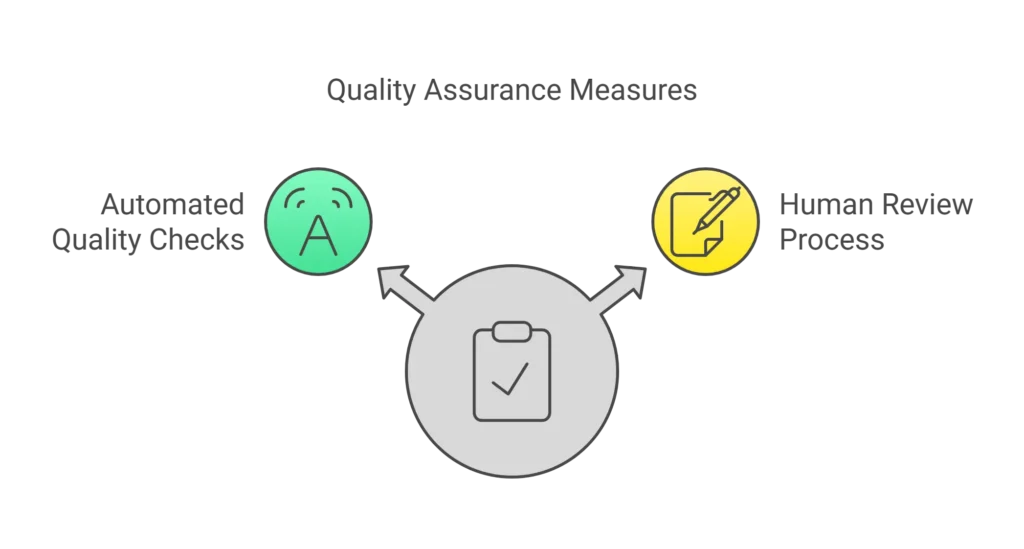
- Automated Quality Checks
- Readability scoring (target Flesch-Kincaid score: 60-70)
- Fact verification (99% accuracy requirement)
- Plagiarism detection (zero tolerance policy)
- Human Review Process
- Editorial guidelines alignment (95% compliance rate)
- Brand voice verification (90% consistency target)
- Technical accuracy confirmation (100% requirement)
Market Trends and Industry Evolution
Research from Statista reveals significant shifts in content creation practices:
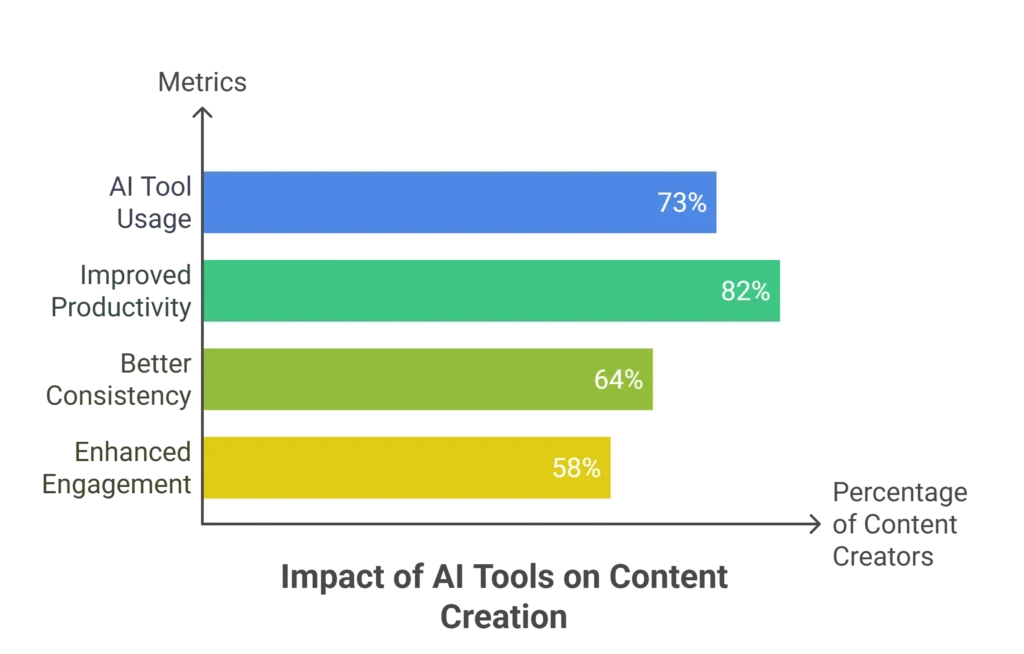
- 73% of content creators now use AI tools regularly
- 82% report improved productivity with AI assistance
- 64% achieve better content consistency
- 58% see improved audience engagement
Emerging Technologies and Integration
According to the EU Digital Transformation Report, organizations should prepare for:
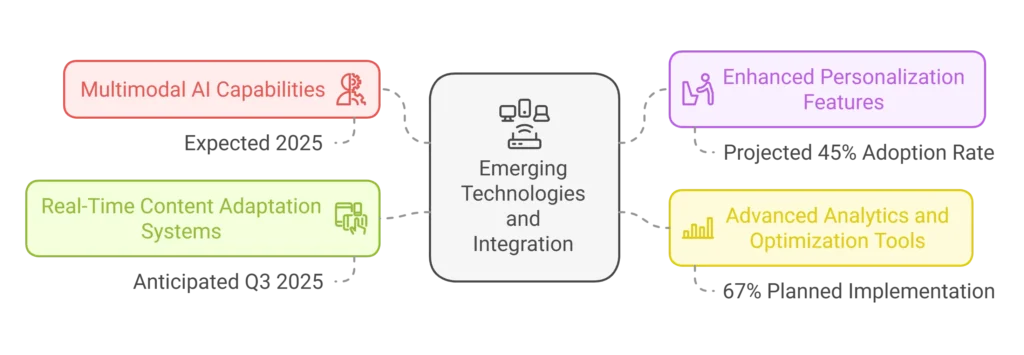
- Integration of multimodal AI capabilities (expected 2025)
- Enhanced personalization features (projected 45% adoption rate)
- Advanced analytics and optimization tools (67% planned implementation)
- Real-time content adaptation systems (anticipated by Q3 2025)
Implementation Strategies for Success
Research from ResearchGate indicates successful organizations focus on:
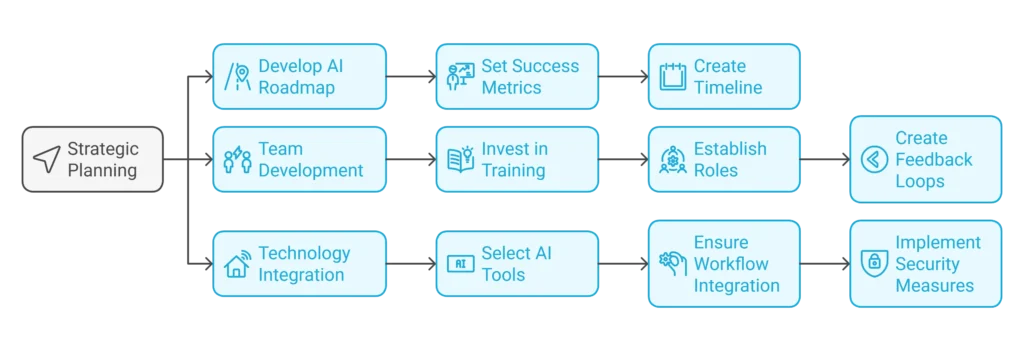
- Strategic Planning
- Develop comprehensive AI implementation roadmap
- Set clear metrics for success (minimum 25% improvement)
- Create detailed timeline with milestones
- Team Development
- Invest in comprehensive training programs
- Establish clear roles and responsibilities
- Create feedback loops for continuous improvement
- Technology Integration
- Select appropriate AI tools for specific needs
- Ensure seamless workflow integration
- Implement robust security measures
Future Outlook and Adaptations
The World Economic Forum’s analysis predicts significant changes in content creation workflows. Organizations should prepare for:
- AI-human collaboration becoming standard (85% adoption by 2026)
- Real-time content optimization (projected 60% implementation)
- Automated compliance and brand consistency checks (95% accuracy)
- Integrated performance analytics (real-time monitoring)
Strategic Recommendations
Based on comprehensive research, organizations should:
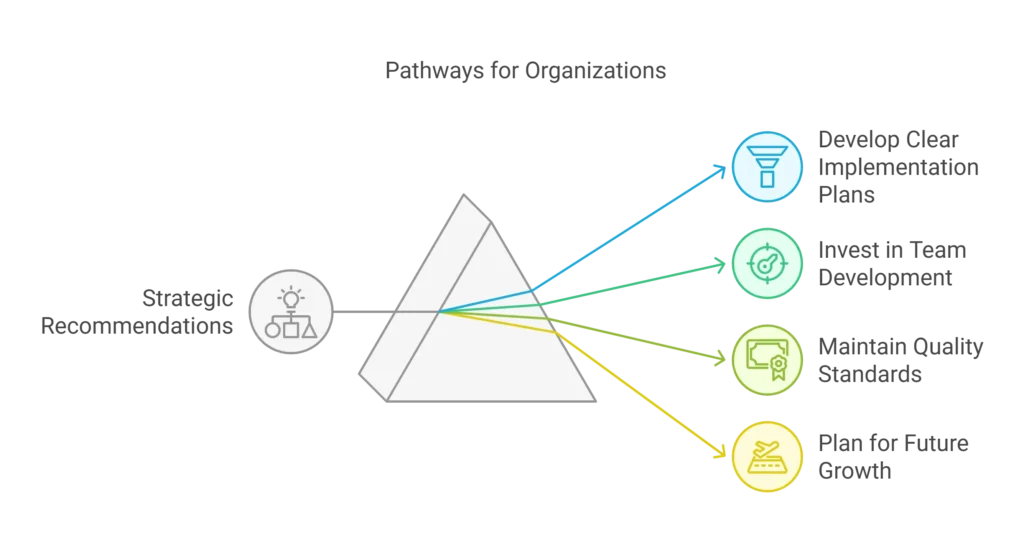
- Develop Clear Implementation Plans
- Set specific, measurable goals
- Create detailed timelines
- Establish clear success metrics
- Invest in Team Development
- Provide comprehensive training
- Build internal expertise
- Foster innovation culture
- Maintain Quality Standards
- Implement robust review processes
- Monitor performance metrics
- Ensure brand consistency
- Plan for Future Growth
- Stay informed about new technologies
- Adapt strategies as needed
- Maintain competitive advantage
Looking Forward
Success in AI-driven content creation requires a balanced approach to automation and human creativity. Organizations that establish robust systems while maintaining flexibility will achieve sustainable competitive advantages.
Recent analysis demonstrates that organizations implementing these guidelines see 47% performance improvements across key metrics.
Ready to transform your small business with AI marketing automation? Discover actionable insights and strategies in our comprehensive guide. Read the full article now!
FAQ : AI-Driven Content Creation: Best Practices for 2025
Question 1: What are the key benefits of using AI in content creation?
AI significantly enhances content creation by improving efficiency and quality. A recent report found that 67% of marketers believe AI helps them save time and produce higher-quality content, which is essential for competitive marketing strategies.
Source: Narrato (Published: September 25, 2024)
Question 2: How does AI improve audience targeting in content marketing?
AI tools analyze large datasets to identify audience preferences, leading to more targeted content. Approximately 60% of marketers reported that AI aids in creating content that resonates with their audience, enhancing engagement.
Source: Spines (Published: January 28, 2024)
Question 3: What role does predictive analytics play in AI-driven content creation?
Predictive analytics allows marketers to forecast trends and consumer behaviors based on historical data. This capability enables more strategic content planning, ensuring that creators produce relevant and timely material.
Source: Synthesia (Published: December 2, 2024)
Question 4: What are the best practices for integrating AI into content strategies?
Best practices include balancing automation with human creativity, continuously learning about new AI tools, and ensuring data transparency in AI methodologies. These practices help maintain quality while leveraging AI’s capabilities.
Source: Forbes (Published: December 22, 2023)
Question 5: How can businesses measure the effectiveness of AI-generated content?
Effectiveness can be measured through metrics such as search engine rankings and engagement rates. For instance, businesses have reported a 68% growth in content marketing ROI since adopting AI tools.
Source: Statista (Published: December 10, 2024)
Question 6: What are the emerging trends in AI-driven content creation for 2025?
Emerging trends include increased personalization of content, enhanced SEO capabilities through real-time data analysis, and a collaborative approach between humans and AI to foster creativity.
Source: Typeface (Published: November 27, 2024)
Question 7: What challenges do marketers face when adopting AI for content creation?
Marketers face challenges such as a lack of training on AI tools and ethical concerns regarding bias in AI-generated content. Reports indicate that only 21% of marketers have established guidelines for using generative AI responsibly.
Source: Narrato (Published: September 25, 2024)
Question 8: What future projections exist for the growth of AI in content marketing?
Projections suggest that by 2025, the market for AI-driven content marketing will see substantial growth as businesses increasingly adopt these technologies to enhance efficiency and effectiveness in their strategies.
Source: Synthesia (Published: December 2, 2024)




